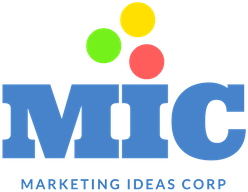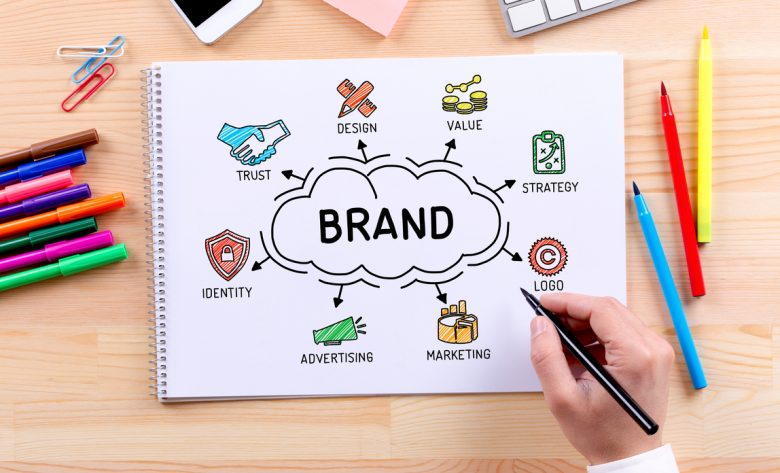How to create an outstanding brand identity
Think of your brand identity as your company’s personality. It’s how the world recognizes you and begins to trust you. If you see someone change how they look and act all the time, you won’t feel like you know who they are, and you certainly wouldn’t trust them. So a brand identity is more than a logo. It’s more than a brand style guide, is a combination of all this factors that will become an essential way to differentiate yourself from your competition. A brand identity influences your customers’ experience at every touchpoint. It subconsciously affects how they view everything from your industry, to your relevance, to your trustworthiness.
The key components of brand identity
First of all you know your brand. There are five key components: mission, vision, target audience, brand’s visual language and core values. Together, these are the most important things needed to establish your brand identity because they tell the world what you stand for. All the other parts of your brand style guide are tangible elements that communicate those key components to the world through design.
- Mission and vision: Write a mission (A mission statement is a short statement of an organization’s purpose, identifying the goal of its operations) statement about why your company exists and a vision statement (A vision statement is a company’s road map, indicating both what the company wants to become and guiding transformational initiatives), about where you want your brand to go. These can be big (you’re going to change the world) or small (you solves a small, annoying problem), as long as they’re true to your brand.
- Target audience : One common misconception is that a brand identity is exclusively informed by what a brand wants to present. This isn’t entirely true. We also need to understand what a brand’s customers want to engage with.This doesn’t necessarily mean that the brand’s customers will choose the logo color. But it means we get a solid understanding of their needs, wants, and values. Creating an audience personas are incredibly helpful here.
Beyond a brand’s primary audience (customers), we also want to know what secondary or tertiary audiences it may reach (e.g., other brands or potential employees). A brand identity is the “face” that interacts with the entire world. Whatever we create should accurately reflect what the brand wants to do and say to particular people. So this lead to ask yourself
Who is your competition?
Building a brand identity is all about differentiation: making a brand visible, relevant, and unique. Without a firm understanding of the competitive landscape, it’s easy to blend in. This research is crucial to understand not just who the competition is but how the brand compares, in perception and presentation.
- Brand’s visual language: the visual element of a brand identity (aka your brand’s visual language). This includes:
- Logo:
- Color palette
- Typography
Logo: You may know what color your logo should be, but do you know how it’s going to look in different environments?. Include all approved versions of your logo, describe when to use each one, and show visual examples to make it really clear.
- Size: List minimum size and proper proportions.
- Space: If logo requires a certain amount of white space around it, give clear instructions.
- Colors: Show variations (reversed, in color, black and white) and when to use them.
- Don’ts: It can be just as important to show how you don’t want your logo to be used


Color palette: Speaking of colors, defining a brand palette will go a long way towards creating a consistent look and feel. Most brands choose four or fewer main colors and don’t stray too far from the hues of their logo. Get started by choosing a neutral color as your base. One-to-two neutral covers will act as the canvas on which you’ll paint. Neutral colors are generally defined as black, white, ivory, silver, gray, brown, tan, gold, and beige colors. It’s helpful to think in terms of warm or cool colors, which can influence your entire palette. Blacks, browns, tans, golds and beige are considered warm, while white, ivory, silver, and gray are cooler in comparison.
Next, add two pop colors.We need to add some color to the canvas. These are going to be your main colors that represent your brand. This is the color that grabs the attention of your audience and becomes the star of your visual identity. Go for vibrant tones that play well together.
And las Choose a call to action color. A call to action is usually a button, or a link, that tells viewers what to do. As such, this color should stand out, but be complementary to your main brand colors, such as a contrasting color on the opposite side of the color wheel.
Here is our color palette

Typography: Every stage has its own unique challenges, but typography can be tricky in a visual language. Brands often follow trends (serif vs. non-serif) that are hot for a second but can quickly become dated or appear unoriginal. We often find ourselves pushing back against certain requests.
We believe branding is like building a house. Each element is built on top of the other. Therefore, typography should be informed by the shapes of the logo. You’d think it’s a simple choice, but typography is just as emotional as anything else. It needs to communicate the brand persona effectively.
We limit the number of font families to 2-3. This generally includes a primary brand typeface, then secondary typeface(s) for specific purposes based on where it will be used, such as a body copy typeface, UI typeface, etc.
and las but but not least.
- Values: Determine the guiding principles for company decisions and actions. Memorable values will make it easy for your team to stay on-brand.
Your brand style and identity is a living, breathing document. You will end up learning what works as you use it, and you can always add to it or adjust the information, as your brand will be evolving with time. The most important thing is to set a solid foundation by creating one.
But you’ll also want to revisit it periodically.
Designate one place to keep ideas as they come up (new decisions made, new examples you like, etc.), so you can easily find them when it’s time to review. Then calendar time to review and revisit and refresh your style guide. You can do this one month, a quarter, or a year after finalizing the guidelines.
Final thoughts
Keep Your Brand Identity Strong. A strong visual language should always reflect your brand, the important thing is that it lists all your basic brand elements and can act as the singular point of reference for any future design project.
And if you need a fresh set of eyes on your branding, we’d love to connect. Subscribe to our weekly newsletter, or send us an email.

